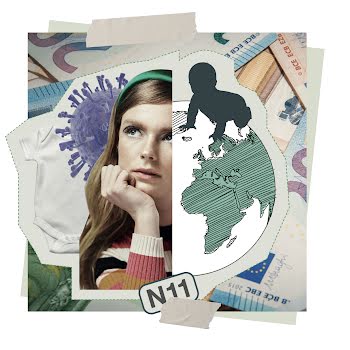
By Julie Meehan
17th Jul 2022
17th Jul 2022
In the second part of a new series, Clinical Psychologist and Parent Guide, Dr Julie Meehan helps parents spot the not-so-obvious signs of anxiety in children.
In my last piece, I shared the first strategy in demystifying anxiety for you and your child. We explored the ways anxiety can show up for children along with the obvious and not so obvious signs to look out for.
Once you have sense that your child is experiencing anxiety, and how it shows up, the next step is to help them to understand their experience by putting a name to it.
Strategy #2
Naming anxiety
The second step to demystifying anxiety is to name it. Remember, anxiety is difficult to grasp and can shapeshift. As adults we may not be even aware we are experiencing anxiety and this goes for children and young people too – usually even more so.
When anxiety shows up, a spectrum of neurochemical, physical, emotional, cognitive and behavioural reactions happen. All at once.
That’s a whole lot of unpleasantness and it makes it really hard for children and young people to make sense of their experiences.
Naming anxiety allows your child to know that this mush of physical, cognitive and behavioural experiences is a thing – it has a name.
That alone can be immensely powerful.
Why naming it tames it
Brain science research has shown that naming our difficult experiences and emotions helps to calm our body and mind – a finding that is aptly captured by a phrase used by Dr. Dan Siegel, neuro-psychiatrist and author, which is, “To name it is to tame it.”
The cortex in our brains is divided into two hemispheres – the right and the left. The right hemisphere is the part of the brain that receives all the raw information about our fear and big emotions from the limbic system, which sits under the cortex. The right hemisphere processes non-verbal information, and so it can get flooded with the raw emotional data that leads us to feeling overwhelmed. The left hemisphere processes verbal information, so when we name our emotions, it connects the left hemisphere to the right hemisphere which has an integrative and calming effect on the brain and nervous system.
A salve to the nervous system
This may seem like another obvious strategy, but it can be a significant and often overlooked step in demystifying anxiety.
The key thing to remember is that often we, and especially our children may not actually know we are experiencing anxiety.
Even though I work with anxiety all the time, when it comes to my own experience of feeling anxious, it can take a while to dawn on me that these unpleasant feelings are indeed anxiety. Anxiety is that much of a shapeshifter.
And then I say to myself, “ok, I’m feeling anxious”. The naming of it does a few things: firstly, it acts as an anchor point for me in a sea of overwhelm; secondly it makes me realise that I am not going insane and thirdly it reminds me to be kind to myself and connect with my body.
It’s not a silver bullet, but it can be a salve to our overwhelmed nervous system at a time when we, or our children, need it most.
Give it a go
Ask and wonder: A good way to approach naming big emotions with your child is to be open and curious with them, asking them, rather than telling them what their experience is. You could say, “I wonder if you are feeling a little anxious/worried/stressed/nervous…?”. Remember, you can never know exactly what your child’s experience is, as it is unique to them, but we can approach the subject in an open and wondering kind of way.
Validate: Whatever the answer you get, it can be so helpful to validate your child’s experience by emphasising how difficult it must be for them. You could say, “Wow, that must be really hard for you”. When we feel that we are understood by someone else – or as some people say, that we are “seen, felt, and heard” – it can have a very powerful effect on calming our nervous system, and therefore our body and our mind.
Share: It can also help your child to know that you have felt anxious feelings too. The trick here is not to go overboard with the TMI. You don’t want your child feeling that they need to empathise and support you, but instead, that you are sharing with them that you know what it feels like from a personal perspective. If it feels right, you could share with them that you are learning ways to support yourself when you feel anxious and if they would like, you can share these steps with them too.
Make it concrete: An anxiety scale can be useful for concretising the ungraspable nature of anxiety. Draw up a scale of 0-5, with 0 being the most chilled out they have ever been, and 5 being the most anxious they have ever felt. Put it on the fridge, ask them to show you or tell you what number they are. You can do this too. And you can expand the scale to 10 if you need to.
Time, space and self-compassion
These approaches can take a while to bed down, so give yourself time and space, and remember that just like setting up any new routine, you may need to remind yourself to apply these steps, especially at the start.
Remember to be kind to yourself: our relationships with others (and ourselves) can be messy, and none of us get it right all the time, so perhaps the biggest step we can take is to treat ourselves with compassion and warmth as we navigate our way as parents. For many of us, this might be the hardest step of all. So, I invite you to give this a go too – step by step, bit by bit – and see what unfolds.
© Julie Meehan, 2022
Dr Julie Meehan is a Clinical Psychologist, Parent Guide and (Imperfect) Parent.
Dr Julie has developed an evidence-based, step-by-step pathway for parents to follow that guides you to create more connected and trusting relationships with yourself and your child, allowing you both to meet and grow from life’s challenges, and to thrive.
You can follow The Pathway Home for Parents through Online Self-study Courses, Live Programmes and through Dr Julie’s One to One Parent Guidance Packages on www.juliemeehan.com























